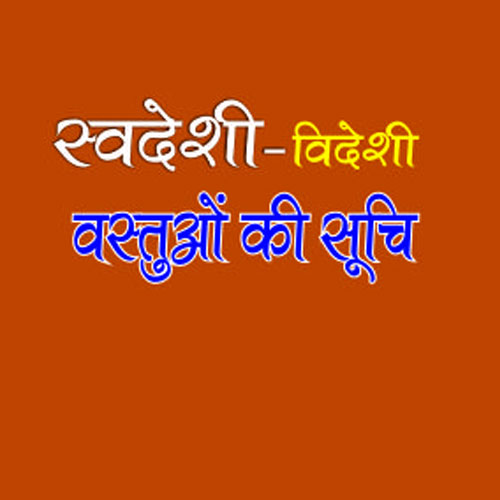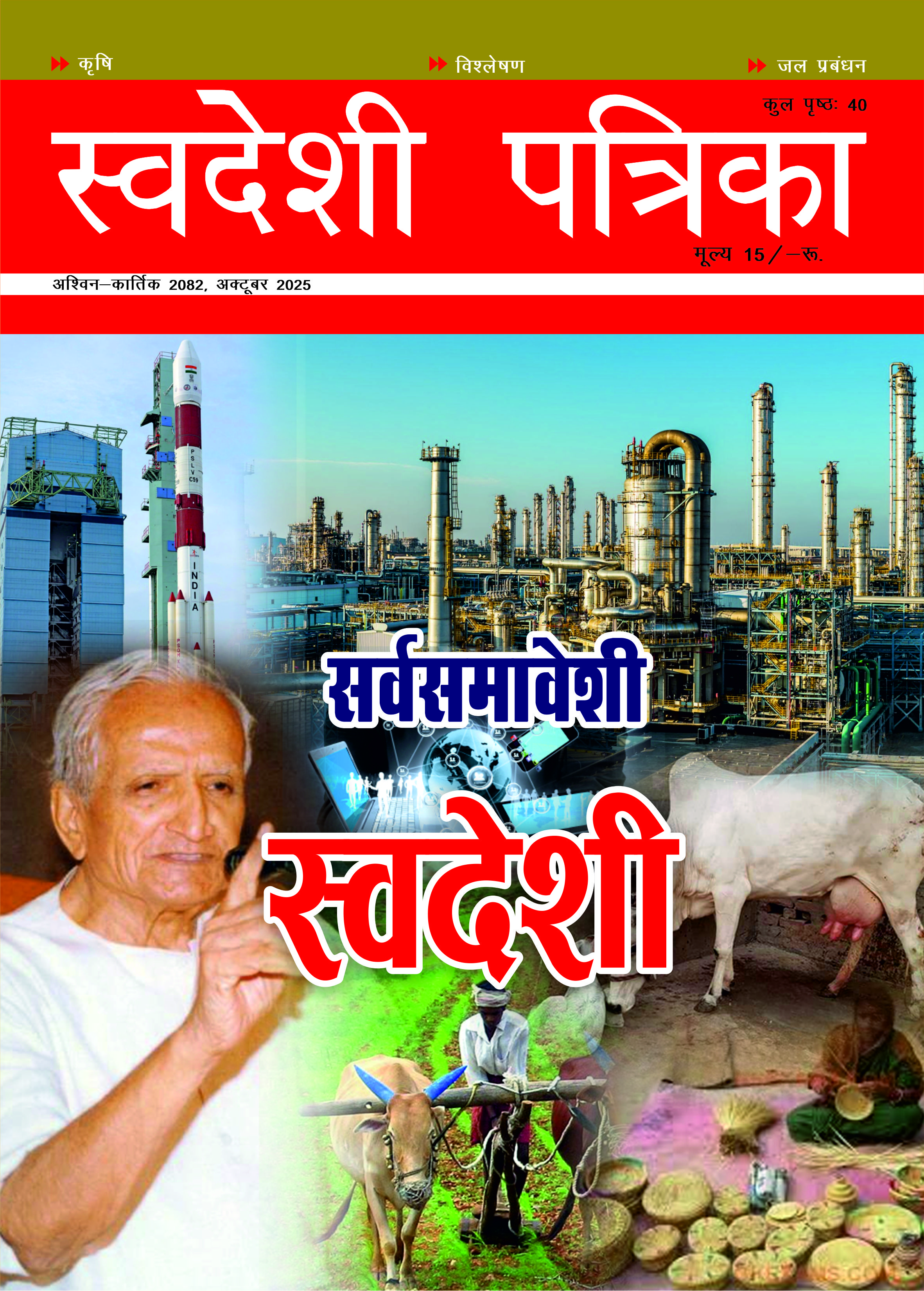
The Untold bravery to save Kashmir - 1
The Kashmir valley had then and even now has a Muslim majority. Like today, a gang of nuisance makers existed at that time also who were few in number but had the capability to take the valley hostage. — Vinod Johri
The assembly elections in Jammu and Kashmir are in the last phase. People must knowand have right to know the truth and ground reality of the circumstances prevailing at the time of partition.
This part of the article appeared in the magazine - Organiser – Oct. 27 – Nov 3 – 2019 – The Sangh Connection – Page – 34 to 38 – by Shri Arun Kumar, Former Sangh Pracharak of Jammu and Kashmir, Akhil Bhartiya Prachar Pramukh of Rashtriya Swayamsevak Sangh. I have taken liberty with pride to search this article for Swadeshi Patrika.It is honestly submitted that nothing is mine in this part of article.
August 15, 1947. The whole of Bharat was beaming with the joy of independence. The people in Jammu and Kashmir were also breathing in free air after the slavery of centuries. Even this independence did not appear palatable to the people from a particular class who were inebriated in the communal frenzy. They thought that Kashmir was a Muslim majority state that had to be in Pakistan. They hoisted the Pakistani flags on the government buildings in Srinagar before the sunrise.
The people’s reactions arose in hushed tones; but who would come forward? The RSS Swayamsevaks came out for the Shakha with the sunrise and they heard this talk. There was a meeting after the Shakha and the Swayamsevaks decided that the strong reply would you be given. They came together near Amirakdal exactly at 10:00 AM. Patriot citizens also joined them. Thousands of people ferried the roads of Srinagar chanting ‘Bharat Mata Ki Jai’. Within no time, the Pakistani flags were taken down from the government buildings.
The Kashmir valley had then and even now has a Muslim majority. Like today, a gang of nuisance makers existed at that time also who were few in number but had the capability to take the valley hostage. In spite of this, the courage that the citizens showed on August 15th, 1947 along with the RSS Swayamsevaks by resisting those nuisance makers had the background of a grand programme of the RSS that had started just a few months earlier. The people of Kashmir valley experienced the capability and discipline of RSS for the first time in that program. The program had taken place at DAV college, Srinagar in which more than one thousand Swayamsevaks in their uniforms took part. In his address, the then RSS Sarsanghchalak Poojya Shri Madhavrao Golwalkarji aka Shri Guruji explained the necessity of the unit of the Hindus and appealed to be alert towards the anti-national activities and foil their ploys with the help of united force.
This initiative by the Swayamsevaks filled the minority but nationalist community, which was affected by an inferiority complex, with enthusiasm. This confidence that arose through it, played an important role to face off the Pakistani aggression in coming days.
Stormy days
Those were stormy days. The prominent RSS workers in Jammu and Kashmir could hear the sound of coming tragedy and were working on a war footing, with their all might, to avoid it. In this regard, some prominent Swayamsevaks had even penetrated among the pro-Pakistani conspirators in the areas that are today in Pak occupied area as well as in Srinagar because of which they received confirmed reports of the conspiracies being hatched in Karachi and Rawalpindi.
On the one hand, the Swayamsevaks war gathering information by staking their lives and on the other hand, the work of uniting the youths was on a constantly through the Shakhas. The reports coming from the border areas was worrisome and the Swayamsevaks were determined that they would try everything to save Jammu and Kashmir from the Pakistani conspiracy.
When the plan of attack on October 22 was prepared on October 13th 1947, in the presence of Muhammad Ali Jinnah, a swayamsevak was present there in disguise. The RSS headquarters at Srinagar had received this information by night which was conveyed in time to Brigadier Rajendra Singh and Brigadier Fakir Singh.
Likewise, the Swayamsevaks were the first to receive the information of the Pakistani conspiracy to abduct Maharaja Hari Singh during his tour of Bhimber. The then Sanghchalak of Jammu Pt. Prem Nath Dogra alerted Maharaja in time because of which, the latter changed his programme. The attack on Bhimber failed and Maharaja’s life could be saved.
On the Path of Duty
Brigadier Rajindra Singh was martyred while combating the Pakistani attackers in Uri. In that difficult situation, Maharaja Hari Singh himself called Shri Balraj Madhok, who handled the entire expedition on RSS behalf, to his Palace. The Prime Minister Mehar Chand Mahajan said clearly, “we want youths from you who can go to Baramulla tomorrow itself and help the military in stopping the enemy from entering Kashmir valley”.
Shri Madhok said, “The heart of our youth are full of spirit, enthusiasm, they are ready to shed their lives for the nation but they are not soldiers. They have neither arms nor the training to use them. In such a situation, how helpful can they be? Brigadier Fakir Singh said instantly, “The RSS Swayamsevak are patriots and educated, we will train them and make them soldiers within a day.”
“So how many swayamsevaks do you want?
150, tomorrow at 7:00 AM.”
It was 12:00 AM. The Mukhya Shikshak of Renavadi, Parana city and Amirakdal were awakened from the sleep and given the responsibility of informing their swayamsevaks by 3:00 AM to gather in the RSS office at 6:00 AM with the preparedness of going to the war zone.
The smaller group of swayamsevaks started coming to the RSS office from 5 AM itself. By 7 AM, more than 200 swayamsevaks had gathered of which 150 swayamsevaks were selected. Those who were rejected had tearful eyes. After the inspiring address by Shri Madhok, there was Sangh prayer and the swayamsevak left hand in the trucks towards the camp at Badami Bagh.
Ready for your cause…
The whole of Kashmir was expecting the Bhartiya army to reach any moment. However, wider airstrips were needed for the landing of the military planes and they were not there. The swayamsevaks finished the challenging task of constructing airstrips at three places, Srinagar, Jammu and Poonch by toiling day and night.
On the path off sacrifice
The first aeroplane of the Indian Air Force landed in Srinagar on October 27, 1947. Within next 10 days, the Bhartiya army captured all the area up to Uri. When the Pakistanis had to retreat from Kashmir, they increased their pressure on Jammu. Both Bhimber add Mirpur had fallen into Pakistan’s hands. More than 50,000 citizens were killed mercilessly. It is impossible to describe what happened to thousands of mothers and sisters.
The grip was tightening around Kotli. The possibility of getting military help was dim. An IAF aeroplane threw the boxes of ammunition but it also fell in the enemy controlled territory. It was neither possible to bring it back from among the enemy nor fighting without it. The RSS swayamsevaks came forward to turn the impossible to possible.
Kotli’s Nagar Karyavah Chandra Prakash took seven swayamsevaks beside him and reached to the box of ammunition scrawling. A nullah in the way was to be crossed swimming. The sounds emanating from the water alerted the enemy. They were inching forward and pushing the box amid the showering of bullets.
All of the sudden, bullets hit Shri Chandra Prakash Ji and Shri Ved Prakash ji, but they had no time to look after them. The other swayamsevaks took their boxes and went ahead. They returned after successfully handing over the ammunition to the soldiers. Both the swayamsevaks passed away. They had to carry their dead bodies on their back and scrawl upwards on the hill. The showering of bullets was becoming intense. Two more swayamsevaks were hit by the bullets and remaining two colleagues lifted them on their back.
All four swayamsevaks were cremated on the same pyre on the outskirts of the Kotli town. They lived up to their vow. The soldiers had enough ammunition now that they took with them and started marching ahead on the same road from where it was brought. The Pakistani guns were rendered silent with the sunrise. The Tricolour was flying high on the hill ahead.
This body feIls for you, Salute Salute!
Kotli was now in full control of Bhartiya army. A report came abruptly that aggressors had surrounded 1200 Hindus in Palandhari, 20 kilometres away from there. Kotli could not be left unsecured, hence soldiers in large numbers could not be sent there. It was determined that three soldiers,15 jawans of Jammu and Kashmir police and 100 swayamsevaks would go to Palandhari for this mission. The enemy got the information of the mission in advance because of a traitor officer and they were all prepared for this. The entire unit fought till there last breath; none of them returned alive.
The second part of the article will be requested for publishing in the next edition of Swadeshi Patrika.
Vinod Johri: (But not the author of this article)


